
Seed Treatment: Methods To Improve Planting Material
Weak planting material is highly vulnerable to pests and weather extremities; this is why seed treatment increases growers’ chances of getting high yields. The advantage explains the popularity of seed treatment products among farmers on the one hand and a significant demand for pre-processed planting material on the other. Because the process requires extra time, special equipment, and extreme caution with seed treatment chemicals, it makes sense for farmers to buy and for ag input suppliers to provide already treated seeds.
What Is Seed Treatment?
Specific processing of the planting material to make it more resilient to harsh conditions is known as seed treatment (or dressing). Depending on the treatment substance origin, there exist synthetic and organic seed treatments. Also, different dressing preparations target different pathogens and pests, so there are seed treatment fungicides, insecticides, nematicides, etc. Finally, the three main types of dressing fall into pre-sowing, pre-storage, and mid-storage treatments, based on the processing time.
The treatment can be conducted on both sides: by a planting material producer (as a boost to regular seeds) or by a farmer (to ensure fast and effective germination and further growth).
Seed Treatment Methods
Pre-processing of the planting material before sowing promotes germination and overall crop growth potential, as well as significantly increases resistance both to biotic and abiotic stresses. In particular, biotic factors are pathogen and pests, while abiotic stresses include soil salinity, poor soil types, droughts, and other unfavorable weather conditions.
Different methods of seed treatment comprise:
- fungicidal and insecticidal dressing,
- hardening,
- fortification,
- pelleting,
- infusion,
- osmotic priming,
- fluid drilling,
- separation of viable seeds.
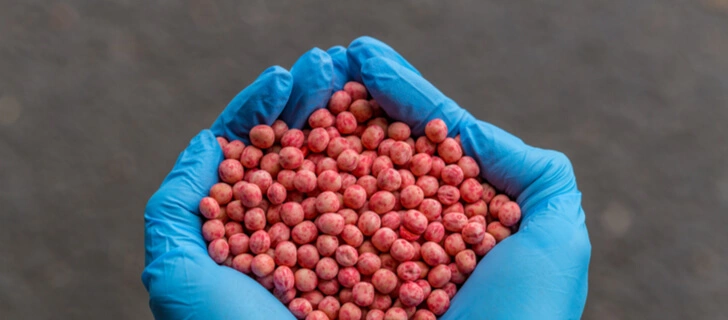
Fungicide Seed Treatment
This protection method controls fungal diseases like smuts, rots, or seedling blights. Seed treatment fungicides don’t protect the crops throughout all plant growth stages but help them establish faster.
There are several types of fungicide seed treatment depending on its purpose and pathogen presence:
- disinfection kills already penetrated pathogens that caused infections;
- disinfestation controls microbes on the planting material surface;
- protection prevents pathogen presence and further infection.
Fungicide seed treatment chemicals may have different application forms, e.g., slurry powder or liquid. There are metallic and non-metallic, organic and synthetic, mercurial and non-mercurial fungicides, depending on composites. The ones that penetrate the planting material to prevent fungal diseases without affecting the metabolism of the host crop are known as systemic.
Fungicide seed treatment is beneficial:
- for early sowing when excessive soil moisture and low soil temperature increase the risks of damping-off diseases;
- in conservation tillage practices;
- when germination capacity is low.
Fungicides are more effective when used in combination with other active agents. For example, mefenoxam and metalaxyl can be successfully applied against the water molds of Pythium and Phytophthora but are inactive to Rhizoctonia, Phomopsis, and Fusarium. However, the combination of metalaxyl and azoxystrobin shows good activity to all the enlisted fungi but Phytophthora .
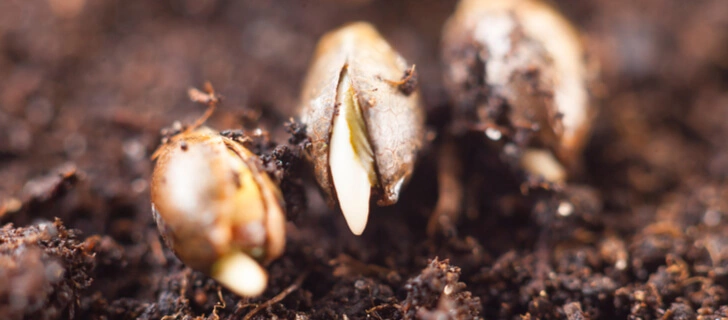
Seed Treatment Insecticides
This treatment method tackles insect infestations and protects the planting material from the damage they make.
Specific insecticides are often effective against specific pests, so chemical mixtures or compounds can kill more insect species. However, it is important to observe chemicals compatibility, sequence, and caution measures, and never consume treated material as human or livestock food.
Hardening As A Seed Treatment Method
Hardening suggests soaking the planting material in a specific solution to make seedlings more resilient to cold and droughts. It also speeds up germination, which starts after the solution absorption. To carry out the treatment process successfully, one must determine:
- the equal volume of the solution and the planting material;
- correct soaking time;
- proper drying (to the standard moisture content in seeds).
Fortification
This method provides the planting material with nutrients to boost seedlings’ vigor and make them more tolerant of unfavorable soil environments. Typically, nutrients are delivered by soaking the planting material in a fertilizer solution, yet this type of seed treatment is not suitable for all crops. In particular, protein-containing seeds (e.g., soybeans or peas) are nourished through moist sand hydration (when the planting material is put in wet fertilized sand for a specific time).
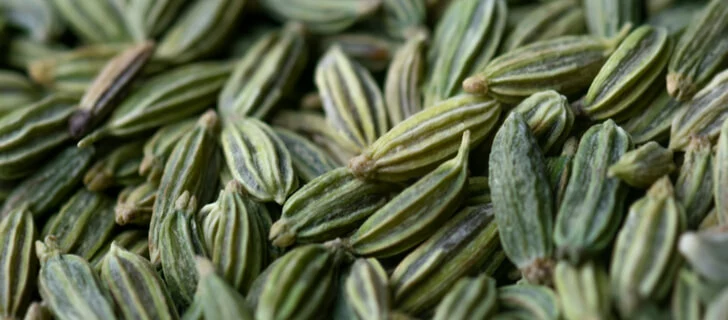
Pelleting
This method implies coating the planting material with inert substances that increase its shape, size, and weight. The inert substances like lime, chalk or talcum stick to the seed with adhesives. Pelleting is applied for tiny or expensive planting material to facilitate its handling, which is particularly useful for forest tree seeds and aerial sowing. Besides, pelleting increases germination potential, seedling vigor, and immunity to diseases .
Infusion
In this treatment type, useful substances slowly penetrate the planting material with the help of organic solvents, e.g., acetone or dichloromethane. The benefit of this method is that it doesn’t require long-time drying (5-10 minutes are enough). This is because organic solvents evaporate naturally when the infusion process is over. Infusion is also known as a dormancy-breaking seed treatment method.
Osmotic Priming
It is a relatively expensive treatment method used when soaking destroys the planting material. This refers to legume seeds with big embryos and high protein content. In the case of osmopriming, water absorption is slowed down by osmotic agents. Typically used osmotic solutions are polyethylene glycol or salt solutions like KNO3, NaCl, or K3PO4.
Fluid Drilling
This method is applied to germinated planting material and aims to protect it while sowing. The process includes several stages:
- germination;
- separation of germinated and non-germinated kernels;
- covering the germinated material with gel (e.g., guar);
- planting the gel-covered material to the seedbed.
Selection Of Viable Planting Material
This treatment method helps increase germination rates and crop density by sorting out empty or damaged seeds. Sowing only viable material gives the required number of plants in the field.
The selection is carried out through testing based on specific gravity , incubation-drying-separation, near-infrared spectroscopy, and other techniques.

Seed Treatment Benefits
Planting material treatment positively affects the overall crop vigor and increases the plant’s tolerance to biotic and abiotic stresses. In particular, chemical or biological seed treatment:
- enhances plant growth with delivered nutrients, which makes crops stronger in competing with weeds;
- helps in integrated pest management since colored kernels keep birds from eating them;
- reduces the necessity of chemical applications (fungicides and pesticides) in subsequent growth stages;
- decreases the occurrence of crop diseases due to pathogens and unfavorable growth conditions;
- boosts roots growth and shoots vigor thanks to nutrients supply;
- provides beneficial bacteria (e.g., rhizobia) if they are added to the filler;
- protects crops from nematode infestations through nematicide seed treatment;
- increases plant density and field productivity thanks to planting more viable seeds;
- allows collecting coated grains faster when they are spilled.
EOSDA Crop Monitoring
Fields analytics based on high-resolution satellite images to track all the changes on-the-spot!
EOSDA Crop Monitoring As An Assisting Tool In The Seed Treatment Market
Remote field monitoring can be used for numerous purposes, including to check the productivity of dressed planting material, thus helping to innovate seed treatment management techniques. In particular, satellite-based EOSDA Crop Monitoring is specifically designated for precision agriculture needs and can be effectively used by planting material producers or distributors as well as crop protection input suppliers.
This is where vegetation indices and weather analytics on the platform prove ultimately helpful, providing valuable insights on the planting material quality in real conditions. Thus, with a wide range of features in our crop monitoring solutions, seed producers and protection product manufacturers can:
- validate the germination process of crops;
- assess seed resistance to biotic and abiotic stresses;
- avoid reclamations by improving quality assessment;
- calculate the percentage of sprouting and plant density per hectare;
- evaluate sprouts health;
- monitor the growth speed;
- predict the yield volumes per hectare.
Input suppliers can use all these sensitive data on the treatment research and seed testing stage, as well as for ongoing monitoring of how farmers use their planting material and what results they get. This is important for developing more resistant, more viable, and more yield-resulting planting material to meet the drastic climate changes faced by the ag sector.

For Seed Distributors And Buyers: Use EOSDA Crop Monitoring As Add-On
Input suppliers can integrate EOSDA Crop Monitoring into their systems and offer it for their clients, enjoying several benefits. On the one hand, input suppliers can:
- get useful data regarding how their seeds grow in these or those conditions;
- identify potential problems and find ways to solve them;
- improve their products in the future;
- get risk notifications and valuable data for sales representatives to manage the market demand and promote sales;
- increase customer loyalty and transparency through data-driven decisions.
On the other hand, their customers will be able to consider the previous seed treatment experience through real cases illustrating this or that product use and the outcome of its implementation.
For Planting Material Producers: Compare The Efficiency Of Different Seed Treatment Methods
EOSDA Crop Monitoring can help seed producers assess the effectiveness of different treatment applications, which is showcased in the cereal seed treatment case below.
While growing barley, the crop was sown in two neighboring fields. The planting material established differently in these fields, despite field operations and weather conditions being the same. Namely, early seedling growth in one field was faster than in the other. It can be tracked through a series of MSAVI maps on EOSDA Crop Monitoring.
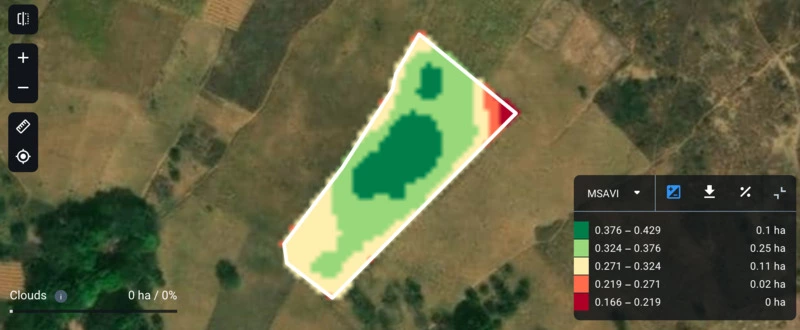
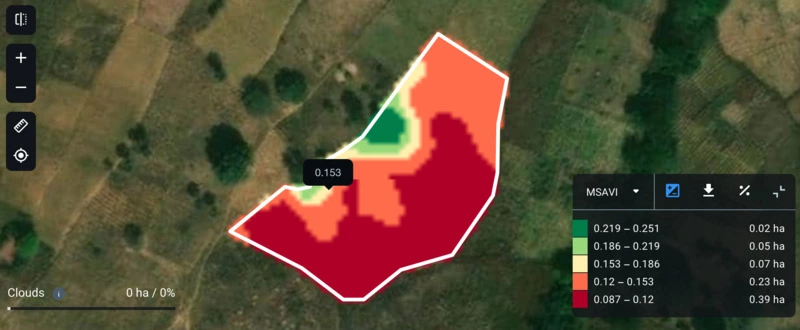
Thus, it is fair to suggest that under similar conditions, barley in field A established faster, and the seedlings developed quicker, compared to field B. This way, it becomes clear that the planting material of barley A is more suitable for areas with a short growing season. So, sowing barley A will help farms in this and similar areas to compete with farms in the areas where the growing season for this crop is longer.
For Seed Treatment Manufacturers: Evaluate The Effect Of The Plant Protection Products
EOSDA Crop Monitoring features also prove useful for suppliers of seed treatment insecticides and other pesticides to understand the efficiency of their crop protection products, which is shown with the following snapshots.
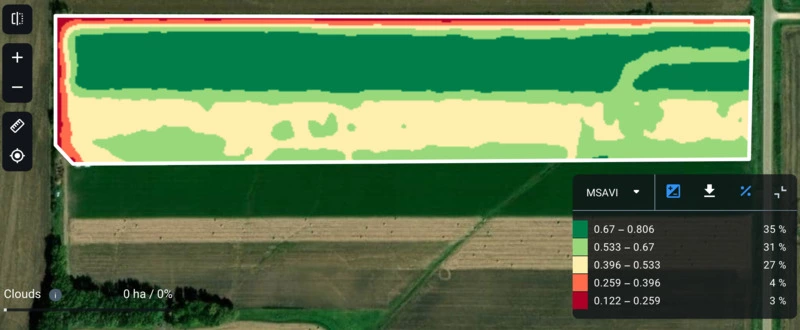
The field was sown with the same alfalfa type, with seeds protected from spotted aphids on the one half (upper part) and no seed treatment on the other (lower part). The point was to monitor the seedlings’ establishment and susceptibility to spotted aphids in both of the field parts.
The data on MSAVI maps helped clearly distinguish the different susceptibility to the pest species in seedlings grown from the treated and untreated planting material. Namely, the treated material (upper part) showed at least 50% resistance to aphids, compared to the field area where the planting material was untreated (lower part). Thus, this use case attests to the benefits of seed treatment because more resilience to pests means protecting more field areas and saving more crops, even without additional pest management events.
Avail EOSDA Crop Monitoring features to offer them as an added value to your product:
- check the planting material quality;
- conduct research;
- analyze the effectiveness of different types of seed treatment by tracking the results.
In 2023, EOSDA launched its EOS SAT-1, a multi-purpose satellite, focused on agriculture, forestry, natural disaster management, and urban monitoring. The launch enabled getting more precise data and providing more comprehensive analytics for end-users. Contact our sales department for details at sales@eosda.com.
About the author:
Vasyl Cherlinka is a Doctor of Biosciences specializing in pedology (soil science), with 30 years of experience in the field. He attended the engineering college in Ukraine and received his degree in agrochemistry, agronomy and soil science in the Chernivtsi National University. Since 2018, Dr. Cherlinka has been advising EOSDA on problems in soil science, agronomy, and agrochemistry.
Recent articles

Transition Guide From Sentinel Hub EO Browser To EOSDA LandViewer
Need an EO Browser alternative that’s just as familiar but more flexible? EOSDA LandViewer offers free recent imagery, a vast satellite data archive, and advanced analytical tools.
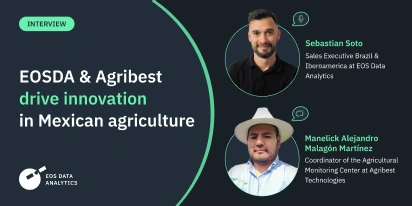
EOSDA & Agribest: Driving Agtech Growth In Mexico
In this insightful interview, Agribest shares how its collaboration with EOSDA is shaping Mexico’s agricultural future, with a focus on profitability, sustainability, and technology.
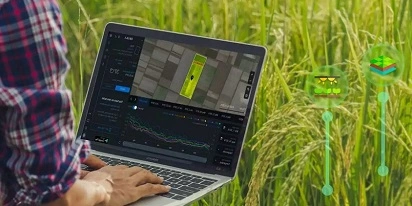
Top Ready-Made Agriculture Tools & Softwares for 2025
Agriculture softwares are silent partners in the field, working tirelessly behind the scenes to support farmers with insights and precision to cultivate sustainable agricultural ecosystems.